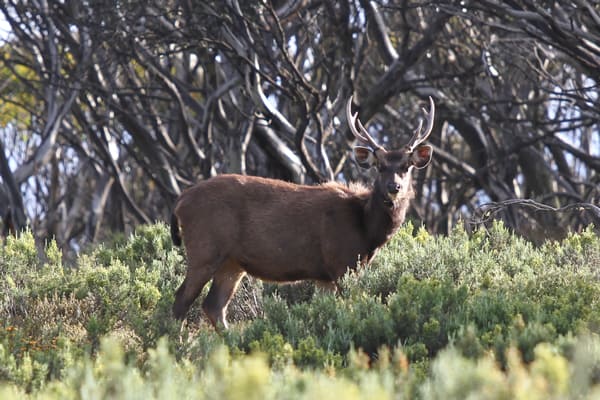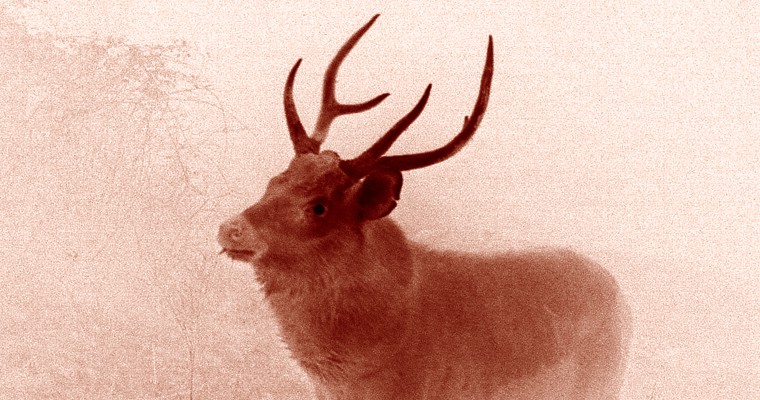It’s time to raise your voice to protect Tasmania’s remarkable landscape of unique and outstanding natural and cultural values along with highly valued agriculture from uncontrolled feral deer damage.
For too long the Tasmanian Government’s deer management policies have been in essence about maintaining a quality deer herd for hunting.
This policy has hindered effective control of feral deer in Tasmania as the population has grown and spread. Feral deer have evolved from being a resource for the enjoyment of hunters to becoming a serious pest.
The Tasmanian Government has finally released a plan that outlines how growing numbers of feral deer will be managed. It’s called the Draft Tasmanian Wild Fallow Deer Management Plan and the government is now asking for comments via a submissions process.
While there are some positives the plan disappointingly does little to protect nature, farmers and the community from the destructive impacts of deer on the environment and society.
Feral deer in Tasmania are now a serious biosecurity issue for our environment and no longer simply a game management issue.
The government needs to hear from people that have diverse views on the impacts of feral deer, not just from the hunting lobby.
SUBMISSIONS DUE: 5PM FRIDAY 3 DECEMBER 2021
How to make a formal submission
Anyone can write a submission – whether you’re an individual, an organisation, Tasmanian resident or live interstate – your voice matters.
Your submission doesn’t need to be complex or overly formal. Simply introduce yourself, outline why the issue matters to you and emphasise the key points you wish to make in your own words.
We have outlined ten key points below that you may wish to consider in your submission. You can also download our submission guide.
Tips for a better submission
- If you can, try to outline how the problems in the plan can be addressed – the people reviewing submissions will be looking for ideas to improve the plan.
- Don’t forget to include your name and contact details.
- Have a read of the draft plan and the useful summary sheet on the Tasmanian Government’s website.
- Read our report Feral Deer Control: A Strategy for Tasmania.
By making a submission you can help shape the future of feral deer management in Tasmania and help protect this incredible place from ongoing feral deer damage.
Where to send your submission
Email your submission to: DeerManagementPlan@dpipwe.tas.gov.au
Or mail your submission to:
Farmpoint
DPIPWE
PO Box 46,
Kings Meadows
TAS 7249
Ten key points to raise in your submission
Please consider the following key issues in your submission. Please try to express them in your own words. Your submissions may be given less weight if you copy and paste. We’ve included additional dot points as food for thought.
1. Rescind partially protected status of deer
To enable the effective management of feral deer, the plan must support rescinding the partially protected status of deer for game in Tasmania’s Wildlife Regulations (2010) as part of the current review of the regulations.
- The efforts of farmers, public and other land managers to control feral deer to minimise impacts on agriculture, biodiversity, ecological restoration and amenity will continue to be hindered under this plan by red tape and permits associated with the partially protected status of deer for game.
- The 2021 Australian Senate Report on the impact of feral deer, pigs and goats called for all Australian jurisdictions to change their existing legislative and regulatory frameworks to ensure wild deer are treated as an environmental pest, maximise the ability of landholders to control feral deer on their land and maximise the ability of park managers to control feral deer in World Heritage Areas and national parks.
2. Population & impact reduction policies
The plan needs to tackle the exploding fallow deer population in Tasmania by putting in place clear population and impact reduction policies rather than relying on old policies aligned with maintaining a quality feral deer herd.
- The plan re-enforces hunter focused policies that have seen feral deer populations explode in Tasmania from a few thousand in the 1970s to now approaching 100,000 and covering 27% of the state.
- Research undertaken through the University of Tasmania indicates fallow deer may occupy 56% of Tasmania and the population is growing at 11.5% a year.
3. Reduce feral deer numbers to 10,000 by 2032
The plan should put in place a realistic policy that reduces and contains the population of feral deer in Tasmania to 10,000 by 2032.
- The population of feral deer is growing rapidly in size and expanding in area. While the exact population is unknown, it is conceivably approaching 100,000 and growing at up to 11.5% a year, despite hunting.
- There may be 1 million feral deer in Tasmania by 2050 without significant intervention.
- Reducing the population to 10,000 and containing feral deer to the Midlands area of Tasmania is entirely feasible and continues to provide ample opportunity for recreational hunting.
4. Natural and cultural values
In recognition of the outstanding biodiversity and cultural heritage values of Tasmania the plan must include goals and objectives specific to the protection and conservation of natural and cultural values.
- The plan includes social and population goals, but they are vague and not targeted at the protection and conservation of natural and cultural values.e ample opportunity for recreational hunting.
5. Wilderness World Heritage Area | Ben Lomond | Douglas-Apsley
To protect the outstanding values of the Tasmanian Wilderness World Heritage Area, Ben Lomond and Douglas Apsley national parks, these areas must be included in the “No Deer Management Zone” and deer must be eradicated from this zone within 10 years.
- The “No Deer Management Zone” is supported in principle but it needs significant amendments to effectively alleviate the impact of feral deer on Tasmania’s biodiversity and cultural values.
- The “No Deer Zone” currently has no timeframe for deer eradication and infers that managing down or containing deer may be all that is achieved. This clearly lacks commitment or ambition.
- The plan sanctions the retention of feral deer in parts of the Tasmanian Wilderness World Heritage Area, Ben Lomond and Douglas-Apsley national parks by proposing they be placed in the “Sustainable Hunting Zone” or the “Mixed Management Zone”. This is an entirely unacceptable standard.
6. Give land owners the tools to control deer
Land owners shouldn’t have to rely on agreements with hunters or one off permits to effectively control deer on their own land in the Sustainable Hunting Zone. They must be able to control feral deer as they see fit for their circumstances.
- In the Sustainable Hunting Zone farmers will be severely restricted by significant take limits and seasonal exclusions for controlling deer on their properties unless they develop a Property-based Wildlife Management Plan that is agreed to by hunters. If that is not achievable, a one off permit may be granted for a limited time for less restrictive control based on an assessment by the department.
7. Professional feral deer control
The plan must re-enforce that the use of professional pest controllers undertaking aerial and ground shooting and trapping must be part of the range of methods utilised to eradicate feral deer from the “”No Deer” zone and bring down the numbers in other zones.
- Research shows consistently that aerial culling can have the lowest negative animal welfare impacts of all lethal control methods and is the most effective in rugged and inaccessible environments.
8. Community engagement
Support improved community involvement, education and awareness of deer management and the threats of feral deer to Tasmania’s precious environment and economy and to gain social licence for control methods.
9. Immediate implementation
The plan should be implemented immediately with significant additional funding allocated to the control program to ensure the deer population is rapidly reduced.
- It is estimated the cost of effectively controlling feral deer in Tasmania would be $1.8 million annually. This cost is just under 2% of the $100 million feral deer are already likely costing the Tasmanian community and economy annually.
10. Create a special taskforce
The feral deer control program is complex and should be managed by a task force working under Biosecurity Tasmania.
- Feral deer are now a serious biosecurity issue for Tasmania and have grown well beyond being a game issue to be managed by Game Services Tasmania. For this reason, the deer control program should be managed by Biosecurity Tasmania in conjunction with Game Services Tasmania. likely costing the Tasmanian community and economy annually.




